there a lot in UK looking to exitForum: Get S'porean doctors based overseas to return instead
OCT 1, 2022
MOH Holdings is looking for a recruitment agency to help recruit 60 medical officers annually from India over the next few years. Can the authorities explain the rationale for this?
There are many Singaporean doctors who are trained in countries like Britain and the United States and are based in those places. Are there preventable hurdles in them coming back to Singapore?
Lim Chew
-
IP addresses are NOT logged in this forum so there's no point asking. Please note that this forum is full of homophobes, racists, lunatics, schizophrenics & absolute nut jobs with a smattering of geniuses, Chinese chauvinists, Moderate Muslims and last but not least a couple of "know-it-alls" constantly sprouting their dubious wisdom. If you believe that content generated by unsavory characters might cause you offense PLEASE LEAVE NOW! Sammyboy Admin and Staff are not responsible for your hurt feelings should you choose to read any of the content here. The OTHER forum is HERE so please stop asking.
You are using an out of date browser. It may not display this or other websites correctly.
You should upgrade or use an alternative browser.
You should upgrade or use an alternative browser.
The PAP government's open door policy for foreign workers
- Thread starter LITTLEREDDOT
- Start date
Local IT grads can’t find jobs while engineers constantly transferred from India to work in SG under CECA
by Correspondent05 Feb 2023

It was reported in the local media on Saturday (4 Feb 2023) that IT graduates from the local universities are having a hard time finding tech jobs.
James Looi, a promising IT graduate from the Singapore Management Univerity (SMU) was good enough to have earned the coveted internships at GovTech, Grab and Shopee.
But five months ahead of his graduation last December, Mr Looi did not get any interviews despite applying for 20 tech jobs.
The only company that granted him interviews was tech company TikTok. Still, after seven rounds of interviews with the company, he was unceremoniously dropped.
Mr Looi said, “I was shocked, disappointed and helpless. I never considered the possibility I would graduate and be unable to find a (tech) job.”
Another graduate, who only gave his name as Mr Tan, was also disappointed. He graduated last December with a digital business degree and applied to several prominent tech companies but did not get any replies.
Mr Tan said, “My first choice would definitely be a career in tech, but the industry would need some time to rebound. I am now looking for jobs in banking and marketing, and hope to get back to tech after one to two years.”
Local graduates like Mr Looi and Mr Tan are among a slew of IT graduates fighting for jobs in the current tech downturn. Many tech companies, including Shopee, Facebook and Twitter, have been laying off people in recent times.
The present slowdown in the tech job market has certainly surprised many IT graduates, who had a 97.8 per cent overall employment rate back in 2021.
When contacted by the local media, the local universities said that they have career coaches to prepare students and graduates for their job search through mentoring and workshops.
Majority of team members from India
Meanwhile, a source in the IT company, Cognizant Singapore, has told TOC that a number of IT staff were successfully transferred from India to the Singapore’s branch last year.They were all given work passes by the Manpower Ministry to work here. TOC emailed Cognizant last November for a response, but to date, there has been no reply.
Indian IT engineers and managers were said to have been transferred to Singapore to work on projects which Cognizant has secured from clients in Singapore.
Under the India-Singapore Comprehensive Economic Cooperation Agreement (CECA), intra-corporate transferees can be transferred from one country to another and work in that country for up to as long as 8 years.
Also, CECA gives preferential access for Singapore service providers and investors in the various sectors of interest: including engineering, banking, telecommunications and real estate development. Such access gives them more opportunities to expand beyond Singapore, MTI said.
In any case, it’s not known if the other India-based IT companies like Wipro, Infosys, TCS, etc are doing the same by constantly transferring Indian IT people to their Singapore’s branches to work here.
The source also confirmed with TOC that the majority of people in project teams are from India and that he is not impressed with the quality of those transferred from India to work here. In meetings, they tend to speak in Hindi among themselves, oblivious to the other non-Indian people inside the meeting, the source told TOC.
Indeed, according to a study in India, it has been said that 95% of engineers in India are unfit for software development jobs. And according to Quacquarelli Symonds’ (QS) ranking of universities in the world, the top 5 universities in India were ranked more than 150th:
- Indian Institute of Science, Bangalore (World ranking 155)
- Indian Institute of Technology Bombay (IITB), Mumbai (World ranking 172)
- Indian Institute of Technology Delhi (IITD), New Delhi (World ranking 174)
- Indian Institute of Technology Madras (IITM), Chennai (World ranking 250)
- Indian Institute of Technology Kharagpur (IIT-KGP), Kharagpur (World ranking 270)
So the Ministry of Manpower has not been verifying the education qualifications of EP holders all along!!??
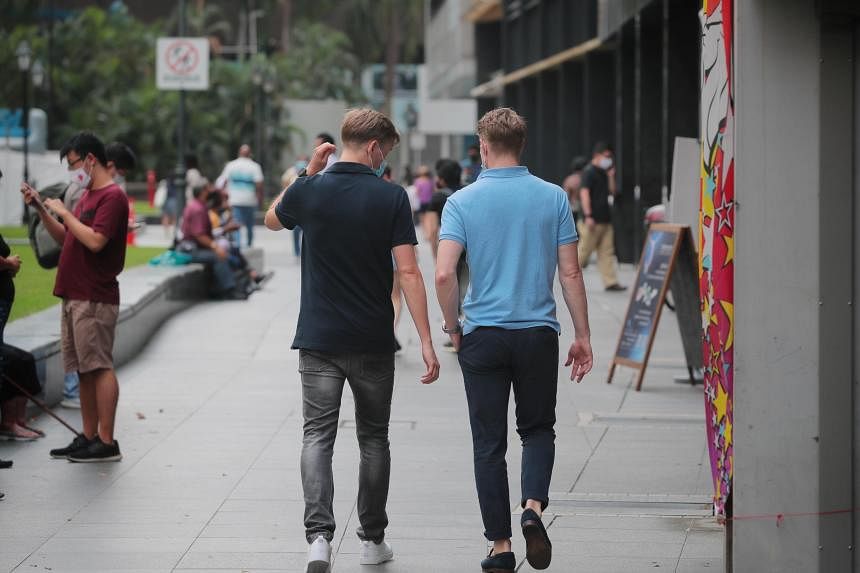
The move coincides with the launch of a new points-based framework for new Employment Pass applications. PHOTO: ST FILE

Tay Hong Yi
Mar 1, 2023
SINGAPORE – To ensure that Employment Pass (EP) applicants are not granted work passes based on fake qualifications, employers will need to provide third-party verification of their diploma and higher qualifications from Sept 1, 2023.
The move coincides with the Sept 1 launch of a new points-based framework for new EP applications called Complementarity Assessment (Compass).
This is because an EP applicant’s qualifications will contribute to his Compass score, which will determine whether he is awarded the work pass, said Minister for Manpower Tan See Leng during the debate for the Ministry of Manpower’s (MOM) budget on Wednesday.
Under Compass, an EP application is scored based on four “foundational criteria” and two “bonus criteria”, covering both an applicant’s and his employer’s attributes. The worker’s qualifications are one of the foundational criteria.
The Government, which has consulted industry associations, employers and the labour movement about the verification process, will share more details in due course, said Dr Tan, who is also Second Minister for Trade and Industry. For EP renewals, Compass and the verifying of qualifications will apply from 2024.
“Rest assured that we will ensure smooth implementation and minimise disruptions to employers’ hiring process,” the minister said.
The move is poised to add another safeguard against fake qualifications, even though employers are already responsible for ensuring the authenticity of an applicant’s credentials, and MOM conducts its own checks. But employers that do not wish to rely on applicants’ qualifications to add points under Compass do not have to submit the verification.
Dr Tan did not elaborate on whether the added verification could affect the time it takes to process EP applications. Online applications currently take 10 business days.
He added that further details on Compass’ bonus criteria, which pertain to skills held by the applicant that are in shortage in Singapore, and the employer’s contribution to the Republic’s strategic economic goals, will be revealed later in March.
The bonus points will cover a targeted minority of strategic EP applications, as the Government expects most applications to obtain a passing score on Compass on the basis of the foundational requirements.
He also announced on Wednesday that employers in services and manufacturing can hire only up to 8 per cent of their total workforce under the Non-traditional Source (NTS) Occupation List, and have to pay these work permit holders at least $2,000 a month.
The occupation list, which was revealed in 2022 but kicks in from Sept 1, stipulates seven rank-and-file roles, such as those of cooks in Indian restaurants, for which employers can hire work permit holders – instead of S Pass holders – from Bangladesh, India, Myanmar, the Philippines, Sri Lanka and Thailand. Typically, employers in the service and manufacturing sectors can hire work permit holders only from China, Malaysia, Hong Kong, Macau, South Korea and Taiwan.
Dr Tan said the quota guards against over-reliance on workers from NTS countries and regions, and ensures that employers diversify their workforce. The minimum salary safeguards against sourcing just the cheapest talent and encourages employers to hire higher-skilled or more experienced workers, he added.
Dr Tan on Wednesday also announced CareersFinder, a new feature on the MyCareersFuture online portal that recommends local residents jobs based on their expressed interests, the skills required and the training pathways available.
The artificial intelligence-driven tool will cut out the hassle of figuring what skills one needs for a job posting, and then the separate hunt for training courses.
A beta version is set for launch in the third quarter of 2023, and registration of interest can be made via the Workforce Singapore website.
“It will become more powerful as the data grows. We will continue to enhance it over time, to make it more responsive to job seekers’ needs,” said Dr Tan.
As borders reopen after the pandemic and foreign investments flow in, local workers are increasingly coming under heat to both compete with international talent and step up to jobs brought in by multinational enterprises.
Dr Tan urged workers to take charge of their own “career health” by tracking their own job marketability, charting their own development, and being resilient against setbacks.
In return, the ministry will support them “every step of the way”, he said.
Continuing the ministry’s years of work to raise working conditions for female workers, elderly workers, workers with disabilities and former offenders, Dr Tan briefed the House on various schemes and their results in securing fair opportunities for these groups.
These include flexible work arrangement guidelines; wage subsidies for employers that hire the elderly, former offenders and workers with disabilities; and progress towards a workplace fairness Bill.
Another group that has drawn the Government’s attention are skilled essential trade workers such as plumbers and electricians.
“Our society has traditionally valued ‘head’ work much more over ‘hands-on’ and ‘heart’ work, contributing to occupational wage disparity. But ‘hands-on’ work – the craft required to make something well, to fix a complex machine – is just as important for our society to function,” he said.
MOM and the National Trades Union Congress are studying ways to make these jobs pay better and offer clearer career and skill progression, with more details to come after the Forward Singapore consultation exercise concludes later in 2023.
This comes after the labour movement mooted in February a new framework to create clear career ladders for essential skilled tradesmen, dubbed the Career Progression Model.
Said Dr Tan: “Over time, if we are able to shift the prospects and perceptions of such jobs and offer attractive career pathways for skilled trades, we will be able to increase the number of locals in these roles in a sustainable way.”
Employers must verify education qualifications of EP applicants from Sept 1

The move coincides with the launch of a new points-based framework for new Employment Pass applications. PHOTO: ST FILE

Tay Hong Yi
Mar 1, 2023
SINGAPORE – To ensure that Employment Pass (EP) applicants are not granted work passes based on fake qualifications, employers will need to provide third-party verification of their diploma and higher qualifications from Sept 1, 2023.
The move coincides with the Sept 1 launch of a new points-based framework for new EP applications called Complementarity Assessment (Compass).
This is because an EP applicant’s qualifications will contribute to his Compass score, which will determine whether he is awarded the work pass, said Minister for Manpower Tan See Leng during the debate for the Ministry of Manpower’s (MOM) budget on Wednesday.
Under Compass, an EP application is scored based on four “foundational criteria” and two “bonus criteria”, covering both an applicant’s and his employer’s attributes. The worker’s qualifications are one of the foundational criteria.
The Government, which has consulted industry associations, employers and the labour movement about the verification process, will share more details in due course, said Dr Tan, who is also Second Minister for Trade and Industry. For EP renewals, Compass and the verifying of qualifications will apply from 2024.
“Rest assured that we will ensure smooth implementation and minimise disruptions to employers’ hiring process,” the minister said.
The move is poised to add another safeguard against fake qualifications, even though employers are already responsible for ensuring the authenticity of an applicant’s credentials, and MOM conducts its own checks. But employers that do not wish to rely on applicants’ qualifications to add points under Compass do not have to submit the verification.
Dr Tan did not elaborate on whether the added verification could affect the time it takes to process EP applications. Online applications currently take 10 business days.
He added that further details on Compass’ bonus criteria, which pertain to skills held by the applicant that are in shortage in Singapore, and the employer’s contribution to the Republic’s strategic economic goals, will be revealed later in March.
The bonus points will cover a targeted minority of strategic EP applications, as the Government expects most applications to obtain a passing score on Compass on the basis of the foundational requirements.
He also announced on Wednesday that employers in services and manufacturing can hire only up to 8 per cent of their total workforce under the Non-traditional Source (NTS) Occupation List, and have to pay these work permit holders at least $2,000 a month.
The occupation list, which was revealed in 2022 but kicks in from Sept 1, stipulates seven rank-and-file roles, such as those of cooks in Indian restaurants, for which employers can hire work permit holders – instead of S Pass holders – from Bangladesh, India, Myanmar, the Philippines, Sri Lanka and Thailand. Typically, employers in the service and manufacturing sectors can hire work permit holders only from China, Malaysia, Hong Kong, Macau, South Korea and Taiwan.
Dr Tan said the quota guards against over-reliance on workers from NTS countries and regions, and ensures that employers diversify their workforce. The minimum salary safeguards against sourcing just the cheapest talent and encourages employers to hire higher-skilled or more experienced workers, he added.
Dr Tan on Wednesday also announced CareersFinder, a new feature on the MyCareersFuture online portal that recommends local residents jobs based on their expressed interests, the skills required and the training pathways available.
The artificial intelligence-driven tool will cut out the hassle of figuring what skills one needs for a job posting, and then the separate hunt for training courses.
A beta version is set for launch in the third quarter of 2023, and registration of interest can be made via the Workforce Singapore website.
“It will become more powerful as the data grows. We will continue to enhance it over time, to make it more responsive to job seekers’ needs,” said Dr Tan.
As borders reopen after the pandemic and foreign investments flow in, local workers are increasingly coming under heat to both compete with international talent and step up to jobs brought in by multinational enterprises.
Dr Tan urged workers to take charge of their own “career health” by tracking their own job marketability, charting their own development, and being resilient against setbacks.
In return, the ministry will support them “every step of the way”, he said.
Continuing the ministry’s years of work to raise working conditions for female workers, elderly workers, workers with disabilities and former offenders, Dr Tan briefed the House on various schemes and their results in securing fair opportunities for these groups.
These include flexible work arrangement guidelines; wage subsidies for employers that hire the elderly, former offenders and workers with disabilities; and progress towards a workplace fairness Bill.
Another group that has drawn the Government’s attention are skilled essential trade workers such as plumbers and electricians.
“Our society has traditionally valued ‘head’ work much more over ‘hands-on’ and ‘heart’ work, contributing to occupational wage disparity. But ‘hands-on’ work – the craft required to make something well, to fix a complex machine – is just as important for our society to function,” he said.
MOM and the National Trades Union Congress are studying ways to make these jobs pay better and offer clearer career and skill progression, with more details to come after the Forward Singapore consultation exercise concludes later in 2023.
This comes after the labour movement mooted in February a new framework to create clear career ladders for essential skilled tradesmen, dubbed the Career Progression Model.
Said Dr Tan: “Over time, if we are able to shift the prospects and perceptions of such jobs and offer attractive career pathways for skilled trades, we will be able to increase the number of locals in these roles in a sustainable way.”
"Mr Curtis, who currently works in Asia, spent a year between 2016 and 2017 in prison for insider trading in New South Wales."
How did Curtis obtain an Employment Pass in SG when he had a conviction in his home country?

Pixie Curtis’s luxurious party not only served as a last hurrah but also as a prelude to her relocation to Singapore. PHOTO: PIXIECURTIS/INSTAGRAM
AUG 2, 2023
Pixie Curtis, a social media personality and Australian multi-millionaire, celebrated her 12th birthday lavishly as she bade farewell to her friends at Sydney’s five-star Crown Hotel.
The young entrepreneur, whose net worth is estimated to be more than $12 million, marked her retirement from her multi-milliondollar toy empire, Pixie’s Fidgets, during the same party.
Pixie founded Pixie’s Fidgets with her mother in 2021, following the success of another line selling hair accessories.
Pixie’s Fidgets designed and sold toys that can help children struggling with paying attention to focus and channel their energy positively.
The pre-teen’s luxurious party not only served as a last hurrah but also as a prelude to her relocation to Singapore.
The party hall was decorated in an all-red Singapore theme. While it is not clear when the party took place exactly, Pixie and her mother posted vibrant pictures of the celebration on Sunday.
A picture-perfect red and white cake was placed in the middle of the stage in a huge plant art piece dotted with red fans. Every seat featured a goodie bag with beautiful red flowers for every guest.
The decision to move comes after her socialite mother Roxy Jacenko, founder of the Sweaty Betty PR firm, revealed in June that the family was leaving Sydney to live with her husband Oliver Curtis in Singapore.
Mr Curtis, who currently works in Asia, spent a year between 2016 and 2017 in prison for insider trading in New South Wales.
Pixie, who has more than 140,000 followers on Instagram, wrote on her Instagram after her birthday party: “The night that was. 12 and Farewell Australia AU - Singapore SG we are coming for you!”
Pixie and her brother Hunter, nine, will reportedly attend an international school in Singapore, where the family has rented a luxury apartment near Orchard Road.
How did Curtis obtain an Employment Pass in SG when he had a conviction in his home country?
Aussie multi-millionaire, 12, throws lavish retirement party before move to S’pore

Pixie Curtis’s luxurious party not only served as a last hurrah but also as a prelude to her relocation to Singapore. PHOTO: PIXIECURTIS/INSTAGRAM
AUG 2, 2023
Pixie Curtis, a social media personality and Australian multi-millionaire, celebrated her 12th birthday lavishly as she bade farewell to her friends at Sydney’s five-star Crown Hotel.
The young entrepreneur, whose net worth is estimated to be more than $12 million, marked her retirement from her multi-milliondollar toy empire, Pixie’s Fidgets, during the same party.
Pixie founded Pixie’s Fidgets with her mother in 2021, following the success of another line selling hair accessories.
Pixie’s Fidgets designed and sold toys that can help children struggling with paying attention to focus and channel their energy positively.
The pre-teen’s luxurious party not only served as a last hurrah but also as a prelude to her relocation to Singapore.
The party hall was decorated in an all-red Singapore theme. While it is not clear when the party took place exactly, Pixie and her mother posted vibrant pictures of the celebration on Sunday.
A picture-perfect red and white cake was placed in the middle of the stage in a huge plant art piece dotted with red fans. Every seat featured a goodie bag with beautiful red flowers for every guest.
The decision to move comes after her socialite mother Roxy Jacenko, founder of the Sweaty Betty PR firm, revealed in June that the family was leaving Sydney to live with her husband Oliver Curtis in Singapore.
Mr Curtis, who currently works in Asia, spent a year between 2016 and 2017 in prison for insider trading in New South Wales.
Pixie, who has more than 140,000 followers on Instagram, wrote on her Instagram after her birthday party: “The night that was. 12 and Farewell Australia AU - Singapore SG we are coming for you!”
Pixie and her brother Hunter, nine, will reportedly attend an international school in Singapore, where the family has rented a luxury apartment near Orchard Road.
Doctors today are like machine operators... green but means turn on the machines, red means stop....When asked whether MOHH intends to expand the recruitment of Singaporean doctors trained overseas, the spokesman declined to comment.
She also would not comment on whether junior doctors from India make up the majority of those who are not local, and whether it issues similar tenders for recruitment services in other countries.
Over 90% of junior doctors hired are local: MOH Holdings

MOH Holdings recruits about 700 junior doctors to support the needs of Singapore's public healthcare institutions every year. PHOTO: ST FILE
OCT 1, 2022
SINGAPORE - Over 90 per cent of junior doctors recruited by the holding company of Singapore's public healthcare clusters annually are local.
These doctors are either graduates from one of the three local medical schools, or returning Singaporeans who pursued overseas medical studies at recognised universities, said a spokesman for MOH Holdings (MOHH) in a statement on Saturday.
The three local schools are the Lee Kong Chian School of Medicine at Nanyang Technological University, the Yong Loo Lin School of Medicine at the National University of Singapore, and the Duke-NUS Medical School.
The statement comes amid an online furore surrounding an ongoing tender, issued on Sept 6, by the company for a recruitment agency to provide services for recruiting doctors in India.
The tender, which closes on Oct 10, was picked up by social media users and alternative news site The Online Citizen, which raised concerns about efforts taken to hire local doctors as well as alleged incidents of widespread fraud among Indian medical students and doctors.
A letter to The Straits Times Forum also asked whether it would be possible to recruit Singaporean doctors trained in countries such as Britain and the United States and are based there.
When asked whether MOHH intends to expand the recruitment of Singaporean doctors trained overseas, the spokesman declined to comment.
She also would not comment on whether junior doctors from India make up the majority of those who are not local, and whether it issues similar tenders for recruitment services in other countries.
She said MOHH recruits about 700 junior doctors to support the needs of Singapore's public healthcare institutions every year. "We have increased our local pipeline over the years."
Between 2012 and 2019, Singapore's medical schools increased their combined intakes by 45 per cent from 350 in 2012 to about 510 in 2019, the spokesman added.
The schools admitted another 40 medical students each year in 2020 and 2021 to cater to students whose overseas medical studies were disrupted by the Covid-19 pandemic.
"We size the intake of our local universities, based on the need of the healthcare sector and also the admission standards of the universities," she said.
"Naturally, this means that places in medical schools are highly sought after, admission is very competitive but, on the other hand, graduates from our medical school are very highly regarded."
The spokesman said MOHH has been recruiting from other countries with qualified doctors, not just India, to supplement Singapore's capacity needs and help reduce the heavy workload of existing doctors.
They must have graduated from medical schools that are on the Second Schedule of the Medical Registration Act, she added.
"These doctors will only be granted conditional registration for clinical practice and under strict supervision.
"They may eventually convert to full registration if they remain in good standing and have favourable supervisory reports attesting to their professionalism and competency."
She added: "Regardless of nationality, we value the contributions of each and every single doctor to Singapore and our healthcare system."
Without machines they are not doctors... sad...
Can't even hire a clerk from so many thousands of diploma, O-Level, and A-Level graduates in Singapore.
Have to hire one from China?
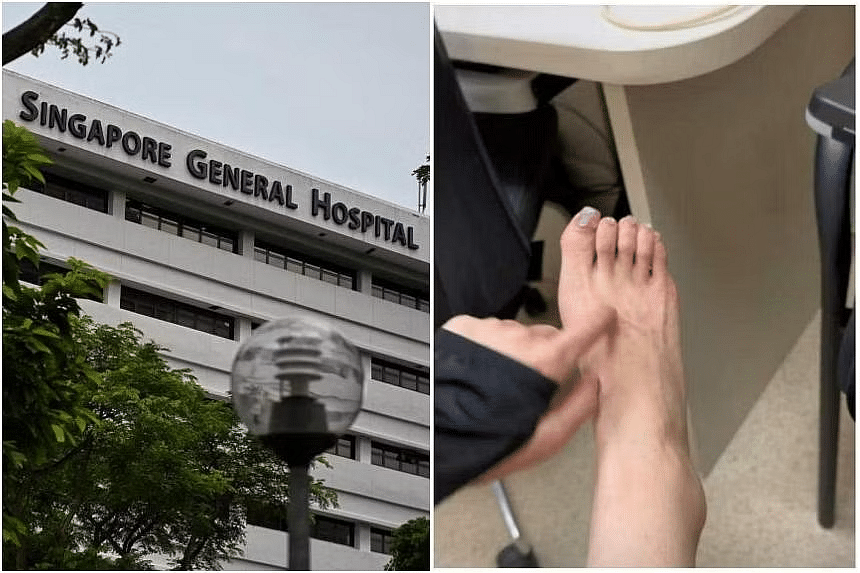
Han Feizi was at Singapore General Hospital to treat her injured foot and was allegedly shouting and being a public nuisance. PHOTOS: ST FILE, SCREENGRAB FROM DOUYIN

Shaffiq Alkhatib
Court Correspondent
Oct 24, 2023
SINGAPORE - A woman who filmed herself arguing with the police at Singapore General Hospital (SGH) allegedly lied in her work permit application by stating she would be employed as a clerk.
Instead, Chinese national Han Feizi, 29, purportedly moonlighted as a freelance hostess at various locations.
On Tuesday, she was handed two charges under the Employment of Foreign Manpower Act.
According to court documents, on or around Aug 11, Han allegedly declared in her work permit application form that she would be employed as a clerk for a firm called KDL Elements.
It deals with entertainment spots such as nightclubs and karaoke lounges.
Her form was submitted to the Work Pass Division of the Ministry of Manpower.
Han, who is now in remand, allegedly had no intention of working for KDL Elements.
She is also accused of moonlighting as a freelance hostess without a valid work pass from around Aug 1 to Oct 11.
On Oct 13, she was handed six charges, including one count of being a public nuisance and two charges of using abusive language against a public servant.
She was given another two charges of assaulting or using criminal force on a security officer and one charge of intentionally causing harassment on Oct 3 under the Private Security Industry Act.
These were handed to her following a separate incident at The Sail at Marina Bay, a condominium in Marina Boulevard.
In an earlier statement about the SGH incident, the police said they received a call regarding a verbally abusive patient at the hospital at around 2.35am on Oct 10.
Han was at SGH’s accident and emergency department to treat her injured foot and was allegedly shouting and being a public nuisance.
She had purportedly verbally abused a nurse before the police arrived.
When two investigation officers (IOs) interviewed Han at around 3.15am, she was uncooperative and refused to provide her statement.
The police said she allegedly used vulgarities in Mandarin against one of the IOs.
Han recorded segments of her interaction with the officers, which went viral on social media after she posted the 11-minute-long video on Chinese social media platform Douyin on Oct 10.
It was shared multiple times on TikTok and Facebook.
The police added that on Oct 3, Han was allegedly drunk and was escorted by security officers at The Sail to her unit.
She allegedly pushed one of them on his shoulder, verbally abused him, and pulled his tie.
The police had said firm action will be taken against culprits who are abusive towards public servants and public service workers carrying out their duties.
If convicted of using abusive language against a public service worker or public servant, an offender can be jailed for up to a year, fined up to $5,000, or both.
Han is expected to plead guilty on Wednesday.
Have to hire one from China?
Woman who argued with cops in video allegedly worked as hostess, lied in work permit application

Han Feizi was at Singapore General Hospital to treat her injured foot and was allegedly shouting and being a public nuisance. PHOTOS: ST FILE, SCREENGRAB FROM DOUYIN

Shaffiq Alkhatib
Court Correspondent
Oct 24, 2023
SINGAPORE - A woman who filmed herself arguing with the police at Singapore General Hospital (SGH) allegedly lied in her work permit application by stating she would be employed as a clerk.
Instead, Chinese national Han Feizi, 29, purportedly moonlighted as a freelance hostess at various locations.
On Tuesday, she was handed two charges under the Employment of Foreign Manpower Act.
According to court documents, on or around Aug 11, Han allegedly declared in her work permit application form that she would be employed as a clerk for a firm called KDL Elements.
It deals with entertainment spots such as nightclubs and karaoke lounges.
Her form was submitted to the Work Pass Division of the Ministry of Manpower.
Han, who is now in remand, allegedly had no intention of working for KDL Elements.
She is also accused of moonlighting as a freelance hostess without a valid work pass from around Aug 1 to Oct 11.
On Oct 13, she was handed six charges, including one count of being a public nuisance and two charges of using abusive language against a public servant.
She was given another two charges of assaulting or using criminal force on a security officer and one charge of intentionally causing harassment on Oct 3 under the Private Security Industry Act.
These were handed to her following a separate incident at The Sail at Marina Bay, a condominium in Marina Boulevard.
In an earlier statement about the SGH incident, the police said they received a call regarding a verbally abusive patient at the hospital at around 2.35am on Oct 10.
Han was at SGH’s accident and emergency department to treat her injured foot and was allegedly shouting and being a public nuisance.
She had purportedly verbally abused a nurse before the police arrived.
When two investigation officers (IOs) interviewed Han at around 3.15am, she was uncooperative and refused to provide her statement.
The police said she allegedly used vulgarities in Mandarin against one of the IOs.
Han recorded segments of her interaction with the officers, which went viral on social media after she posted the 11-minute-long video on Chinese social media platform Douyin on Oct 10.
It was shared multiple times on TikTok and Facebook.
The police added that on Oct 3, Han was allegedly drunk and was escorted by security officers at The Sail to her unit.
She allegedly pushed one of them on his shoulder, verbally abused him, and pulled his tie.
The police had said firm action will be taken against culprits who are abusive towards public servants and public service workers carrying out their duties.
If convicted of using abusive language against a public service worker or public servant, an offender can be jailed for up to a year, fined up to $5,000, or both.
Han is expected to plead guilty on Wednesday.
4,000 nurses hired in 2023 for Singapore’s public hospitals as attrition rate rises
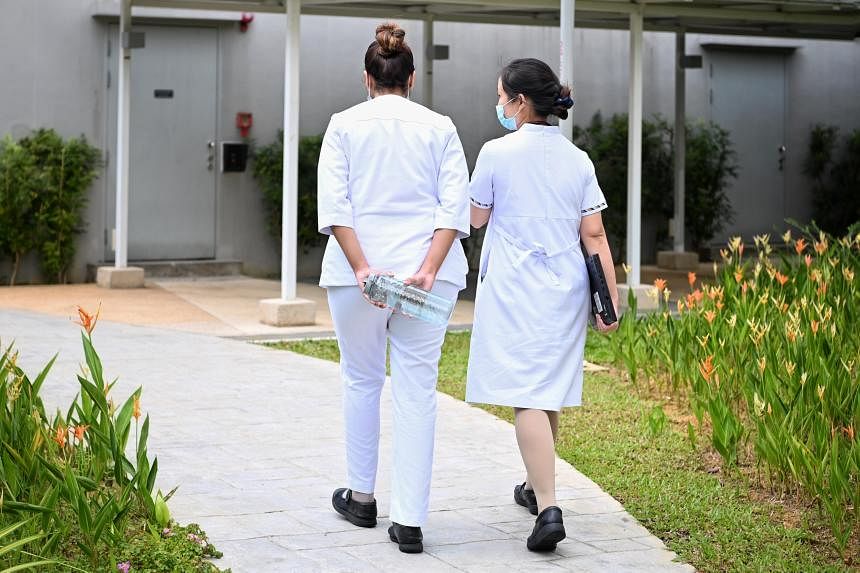
An MOH spokesman said the annual inflow of new nurses has consistently been higher than the outflow of nurses. PHOTO: ST FILE

Joyce Teo
Senior Health Correspondent
JAN 2, 2024
SINGAPORE - At least 4,000 nurses were hired to work in public healthcare institutions in 2023, making up for those who left the country or the profession during the pandemic, as well as helping to meet the growing healthcare needs of the ageing nation.
A Ministry of Health (MOH) spokesman told The Straits Times that the ministry hired about 4,000 new nurses in 2023.
About 3,400 new nurses were registered in 2022, he added.
In July 2023, MOH said public healthcare clusters had recruited about 2,000 new nurses through intensified local and overseas recruitment in the first half of the year, and were expected to hire another 2,000.
This would make up for the higher attrition in the past two years and cater to rising demand, the ministry said.
Singapore experienced a higher attrition rate of foreign nurses in 2021 and 2022, as borders reopened and the global competition for healthcare professionals intensified.
Most of the foreign nurses here are from the region, including the Philippines, Malaysia and Myanmar.
In 2022, the number of Filipino registered nurses dropped to 4,909 from 5,407 in 2021. Malaysian registered nurses totalled 2,117, down from 2,321 in 2021, while registered nurses from Myanmar dipped to 880 from 922 in 2021, according to data from the Singapore Nursing Board.
There were 43,772 nurses and registered midwives in Singapore in 2022, with 36,995 of them registered nurses.
About 75 per cent of the registered nurses in 2022 were Singaporeans or permanent residents. Some 13 per cent were Filipinos, followed by those from Malaysia (5.7 per cent) and Myanmar (2.4 per cent). The rest came from India (1.3 per cent), China (1.27 per cent) and elsewhere.
The MOH spokesman said the annual inflow of new nurses has consistently been higher than the outflow of nurses.
“We expect this trend to continue,” he added.
MOH will also continue to boost the local workforce with foreign nurses.
“While we have expanded our local training pipelines, we still need to augment our healthcare workforce with foreign nurses,” said the spokesman.
“For those who have performed well and are committed to Singapore, we will continue to grant them permanent residency (PR) status. Between 2018 and 2022, around 700 foreign nurses were granted PR status each year.”
MOH did not provide a breakdown of the numbers by year, but in July 2023, Health Minister Ong Ye Kung said more foreign nurses were granted PR status in the past year in recognition of the essential role they played in fighting the Covid-19 pandemic and supporting Singapore’s growing healthcare needs.
Dr Kelvin Tan, head of the Minor in Applied Ageing Studies programme at the Singapore University of Social Sciences, said any additional hires would be of help to public healthcare institutions, but the long-term strategy lies in promoting the Healthier SG programme and urging Singaporeans to lead a proactive healthy lifestyle to reduce their healthcare needs.
“Singapore will not be able to produce enough nurses to supply the increasing local needs resulting from an ageing population and improved life expectancy. We are victims of our own success in attaining Blue Zone status,” he said.
Singapore was named the sixth Blue Zone in the Netflix series Live To 100: Secrets Of The Blue Zones, which debuted on Aug 30, 2023.
These are places with the highest life expectancies in the world. In 2022, life expectancy in Singapore rose to an average of 83 years – almost a year higher than a decade ago.
Singapore has been relying on a pool of foreign nurses to augment the local workforce, but this cannot be a long-term strategy, especially since the populations in neighbouring countries are also ageing rapidly.
While more have left the country in recent years, retaining foreign nurses has always been a big challenge for Singapore, Dr Tan said.
“Unfortunately, some foreign nurses treat Singapore as a launching pad to a career in other countries, which offer better conditions for them and even their family members,” he added.
“As a small island with limited space and a high cost of living, we are not appealing to this highly mobile workforce.”
Dr Jeremy Lim, a public health specialist, said the nursing situation on the ground seems to have improved, due to many factors, including the stabilisation of the exodus of nurses, especially foreign ones, from Singapore.
However, it is not just about finding new nurses to meet the demand, but also about the absorptive capacity of the system, he added.
“All health professionals, including nurses, don’t hit the ground running, and need an appropriate period of supervision and mentoring, the specifics of which would depend on training and prior experience,” said Dr Lim.
“Hence, whatever our ‘spreadsheet ambitions’, we need to be clear-eyed about how many new nurses the system can successfully onboard, train and assimilate in what time period, and then plan the injection of nurses based on this.”
Meanwhile, MOH has been adding hospital beds to help alleviate the bed crunch, saying in October 2023 that it had added 500 beds and was on track to open around 800 more beds by the end of 2023.
Tan Tock Seng Hospital Integrated Care Hub, which offers various step-down care services, including palliative care, opened in early October 2023.
This was followed by the partial opening of Woodlands Health, Singapore’s newest integrated acute and community hospital, in late December.
With every bed, the need for nurses rises. Dr Tan said expanding the use of healthcare technology to help replace repetitive tasks can help to reduce burnout among healthcare workers.
“Bolder programmes on the implementation of smart health systems can ease long-term challenges of workforce drought,” he said.
Dangling more carrots like bursaries or scholarships to attract more students to join the nursing profession, and encouraging more retired nurses to offer their services to care for fellow Singaporeans, will also help, he noted.
Forum: Using immigration to boost population comes with own set of issues
MAR 11, 2024
Aware executive director Corinna Lim made a case for bolstering immigration as a key step to tackling the dismal total fertility rate (TFR) here (Review immigration policy, Singapore’s Plan B for a plunging fertility rate, March 6).
Immigration is always a quick and convenient solution, but it comes with its own set of issues.
While it takes time for new arrivals to integrate and imbibe the ways of the local population, many, meanwhile, may bring social norms that rile the citizen population, creating social tensions and unhappiness.
While this can be resolved over time via gradual integration, a sizeable presence may simply embolden them to carry on their ways without seeing the need to change.
And outside of work requirements, modern-day immigrants may also see little need to integrate with the local population as they can easily link up with their countrymen via social media. This risks leading us to become a country made up of fragments.
We should also not forget that allegiance to a country takes a much longer time to take shape. A huge immigrant intake from any particular country may galvanise the group to advocate that country’s stance.
Being a small country and with today’s geopolitical assertiveness of much bigger and more powerful players, Singapore cannot afford to sleepwalk into a potential future problem.
A dismal TFR is an existential threat to us as a country. I see the root cause as people not having the confidence to have children under the constant cycle of pessimistic news.
A whole new relook at persuading people to have babies is required.
Peh Chwee Hoe
Malaysia’s ringgit woes mask its bigger brain drain troubles
Malaysia may lose skilled workers if more of them leave to make the most of stronger exchange rates.
Chia Wai Mun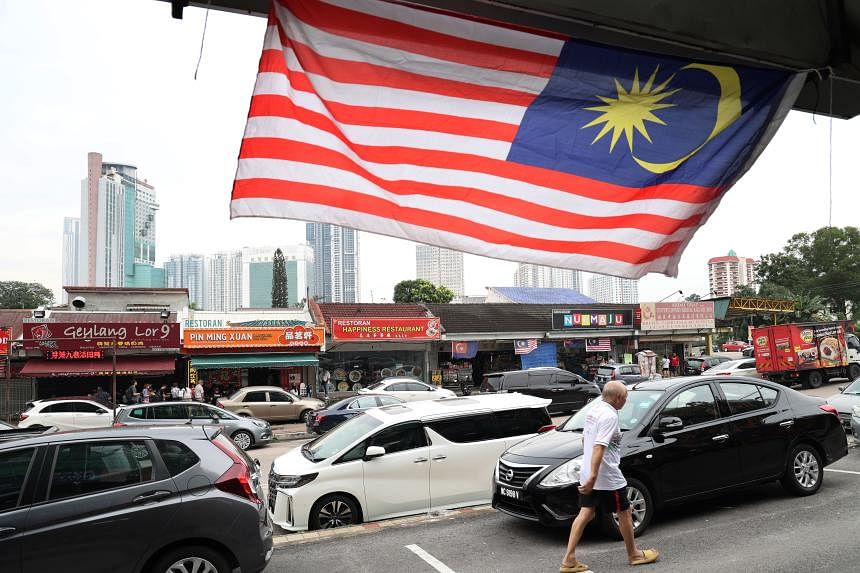
The recent fall of the ringgit to historic lows may well serve to accelerate Malaysia’s brain drain to Singapore. PHOTO: LIANHE ZAOBAO
MAR 15, 2024
Guess how many Malaysians working overseas are in Singapore.
About 1.13 million Malaysians who have migrated overseas – close to six in 10 – were residing in Singapore in 2022, according to Malaysia’s former human resources minister V. Sivakumar, up from 952,000 in 2019.
This is a sizeable proportion of a 33 million population, considering it does not include the vast number of Malaysians who cross the Causeway and Tuas Second Link each day to work in Singapore.
As with most developing countries, Malaysia grapples with the challenge of brain drain, where a country loses its highly qualified professionals to others.
The recent fall of the ringgit to historic lows may well serve to accelerate Malaysia’s brain drain to the Republic.
The currency hit a new low of 3.57 against the Singapore dollar on Feb 22. While it has since improved, analysts say its recent woes might push Malaysians to search for job opportunities elsewhere to earn money in a country with a stronger currency.
An exodus of talent happened in 1998 when economic turbulence triggered an outflow. However, the crisis proved Malaysians to be flexible and resilient. Many who moved overseas eventually returned with valuable skills and experiences.
The ringgit has seen better days, having held steady at 3 to 3.5 against the US dollar for nine years after returning to the managed float system in July 2005.
External developments have accelerated its depreciation since 2014. A drop in crude oil prices, coupled with the reversal of US quantitative easing, led to a net capital outflow and sent the ringgit skydiving.
That year, Malaysia’s financial account went into deficit for seven consecutive quarters, triggering a rapid depreciation of the national currency by 42 per cent. The 1MDB scandal in mid-2015 further eroded confidence in the currency.
Finding career opportunities in Singapore
Today pull factors, coupled with the free flow of information, may drive migration more than push factors. Back in 1998, people found it harder to find a job overseas as the Internet and digital communication were less advanced. Today, opportunities are broader and more accessible.Singapore’s proximity makes it a natural prime destination for Malaysians across a wide range of industries – from construction, services and banking to the high-tech sector. Add to that Singapore’s well-established infrastructure, high standard of living and competitive job market, and relocating can look pretty attractive.
In that sense, the ringgit’s fluctuating fortunes are merely one small push factor.
Singapore is looking like a decent option for a broad range of Malaysians spanning many industries and income brackets. A recent study by the Department of Statistics Malaysia, an agency under the Prime Minister’s Department, found that close to 40 per cent of Malaysians employed in Singapore are skilled workers, most aged 25 to 34, while another 35 per cent are semi-skilled. Notably, 24 per cent are in clerical support roles, and 20 per cent hold professional positions.
Most – slightly more than two-thirds – earn a monthly gross salary ranging from $1,500 to $3,599. Almost one in five – 18.5 per cent – earn between $3,600 and $9,999. And a notable 1.2 per cent receive $10,000 to $17,999. Nearly 0.2 per cent earn $18,000 and above.
The racial breakdown seems fairly balanced with about 46 per cent Chinese, 40 per cent Malay, and 11 per cent Indian.
Almost one in two Malaysians employed in Singapore expressed a strong inclination to prolong their tenure by another six years. They cited as key driving forces a combination of promising job prospects, favourable working conditions, competitive salaries and the Singapore dollar’s advantageous exchange rate.
The report raises questions about the state of Malaysia’s economic health. Growth is slowing and exports are contracting sharply, with knock-on impact on the workforce. While the ringgit was hit hard during the 1998 Asian financial crisis, the current context, taking place amid a more globalised world and more mobile Malaysians, introduces a new set of challenges for Malaysia.
Finding social mobility in advanced countries
Singapore’s economic vibrancy is an attraction, but its ease of relocation and stable political environment are also major draws. For Malaysians, Singapore offers a cosmopolitan, yet familiar multicultural atmosphere that eases cultural assimilation. The feeling of security and the opportunities for higher incomes and career growth make an appealing case for a move.For many Malaysians, what starts out as a strategic career move here can evolve into a permanent transfer to making their home here.
Emigration appeals to Malaysians seeking social mobility. While Singapore stands out, data from the Malaysian Department of Statistics showed that other popular countries include Australia (15 per cent), the US (10 per cent) and the United Kingdom (5 per cent).
The Australian Census of Population in 2016 showed that a substantial 56 per cent of Malaysians there were gainfully employed, and an impressive 70 per cent have at least a bachelor’s degree. Most work in services, with healthcare and social assistance prominent subsectors.
In the US, close to 80,000 Malaysians lived there as at 2019. Over 60 per cent hold a bachelor’s degree, and work in hospitality and services – including F&B, institutes of higher education and computer science. The American Community Survey also found that on average, Malaysian workers with a tertiary education there earn an annual income that is US$8,653 (S$11,533) more than the average worker in the US.
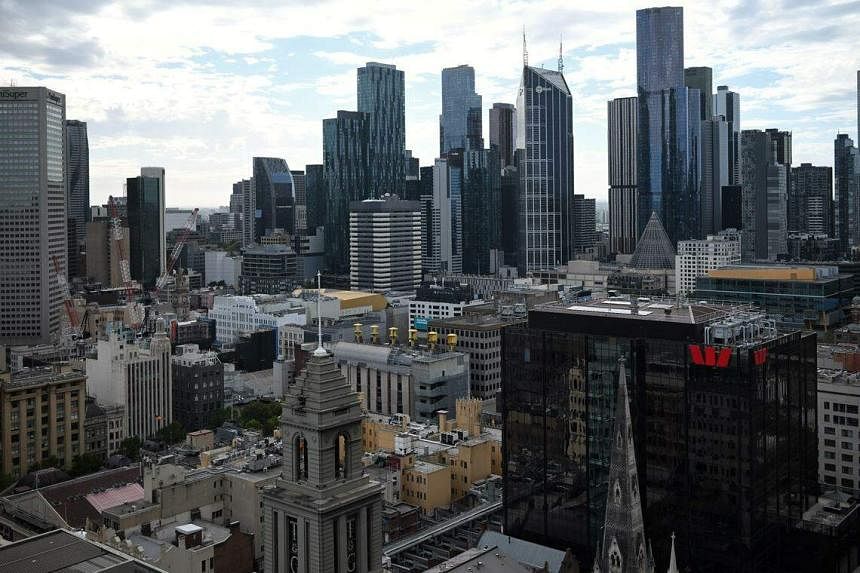
Emigration appeals to Malaysians seeking social mobility, and the data from the Malaysian Department of Statistics showed that popular countries include Australia. ST PHOTO: KUA CHEE SIONG
A similar trend is present in Britain where about 38,000 Malaysians reside, with more than half having a tertiary degree, according to the UK Annual Population Survey 2019. Most occupy professional roles in the services and hospitality industries – which includes social work, accommodation, and food services.
Other attractive destinations are Canada and Brunei, with these countries appealing to Malaysians in healthcare, engineering, information technology and academia.
The challenge: retaining skills for growth
With more Malaysians looking for work abroad amid a weakened ringgit, the country’s recovery could be in jeopardy. Malaysia would lose the very skills required for innovation and growth. Sectors like oil, gas and energy, financial services, information and communications technology, healthcare and business services, which demand high levels of education and expertise, could hollow out over time – these are industries where Malaysia cannot afford to lose ground.The Malaysian authorities know this and set up the Returning Expert Programme in 2001, facilitated since by Talent Corporation Malaysia Berhad, to bring back high-skilled talents across major sectors. By September 2022, almost 4,200 had returned under the programme, comprising high-value professionals and technical experts.
But stemming brain drain further requires an organised and coordinated national strategy to tackle Malaysia’s structural problems and boost the local job market, so as to encourage Malaysians living overseas to invest or return home after gaining useful experience. The overall goal must be to restore confidence in the Malaysian economy.
To retain top talent, Malaysia needs to cultivate an environment that supports innovation and research, yet more than four in 10 Malaysia-based CEOs say they are uncertain about their companies’ long-term viability, according to PwC’s 27th Annual Global CEO survey.
Indeed, while the World Bank predicts Malaysia is on track to become a high-income and developed economy by 2028, a 2021 report sheds light on key areas where it falls behind high-income OECD countries: labour compensation, tax collection, spending on social protection, environmental management and control of corruption. The World Bank further prescribes reforms to revitalise long-term growth by investing in human capital, improving the creation of good jobs and modernising the investment ecosystem.
The weakened ringgit is a wake-up call for Malaysia to address its economic shortcomings – even if the attraction of working abroad will always loom large for mobile Malaysians seeking greener pastures.
- Chia Wai Mun is associate professor of economics at the School of Social Sciences, Nanyang Technological University.
Similar threads
- Replies
- 5
- Views
- 577
- Replies
- 0
- Views
- 435
- Replies
- 10
- Views
- 966
- Replies
- 0
- Views
- 999
